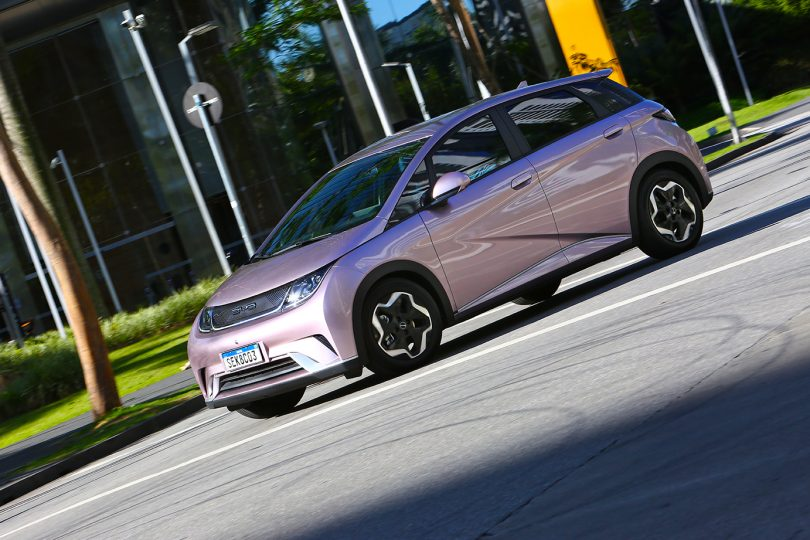As cities around the globe grapple with the dual challenges of climate change and urban congestion, electric buses have emerged as a pivotal solution. In 2023, BYD (Build Your Dreams) is at the forefront, revolutionizing urban transit with their latest electric bus models. The company’s innovative approach and cutting-edge technology are setting new standards in public transportation. In this article, we’ll explore how BYD’s electric buses are transforming urban landscapes, the features that make them stand out, and what this means for the future of sustainable mobility.
The Rise of Electric Buses: A Game Changer for Urban Transit
Why Electric Buses Are Essential
In recent years, cities worldwide have recognized the urgent need to reduce carbon emissions. According to a report by Bloomberg Green, transportation contributes approximately 24% of global CO2 emissions. Electric buses offer a cleaner, quieter, and more efficient alternative to traditional diesel-powered buses, significantly reducing urban air pollution. By 2030, it is estimated that electric buses will make up 50% of all new bus sales globally, a trend largely driven by companies like BYD.
BYD’s Impact on the Electric Bus Market
BYD, a Chinese automaker, has been a leader in the electric vehicle (EV) industry for over a decade. Their commitment to sustainable innovation is evident in their latest electric bus models, which have already been deployed in major cities such as Los Angeles, London, and Sydney. As of 2023, BYD has sold more than 70,000 electric buses worldwide, showcasing the growing demand for sustainable public transport solutions.
Key Features of BYD’s 2023 Electric Buses
Advanced Battery Technology
Central to BYD’s success is their groundbreaking battery technology. Utilizing lithium iron phosphate (LiFePO4) batteries, BYD buses boast a range of up to 250 miles on a single charge. This technology not only provides longer life cycles but also enhances safety, as the batteries are less prone to overheating. According to Battery University, LiFePO4 batteries are recognized for their stability and efficiency, making them ideal for large-scale transit solutions.
Smart Charging Solutions
One of the challenges of electric buses is maintaining an efficient charging infrastructure. BYD addresses this with their smart charging solutions, which include fast-charging stations capable of recharging buses in under two hours. These stations are strategically located in urban areas to minimize downtime, ensuring that public transport systems remain reliable and efficient.
Innovative Design and Accessibility
BYD’s latest electric buses are designed with both passengers and cities in mind. Features such as low-floor designs improve accessibility for all passengers, including those with mobility impairments. Additionally, the buses are equipped with real-time data monitoring systems that provide insights into vehicle health and optimize routes, reducing energy consumption and improving service reliability.
Transforming Cities: BYD’s Global Impact
Case Studies: Cities Leading the Charge
- Los Angeles: In Los Angeles, BYD’s electric buses have become a staple of the city’s public transport system. The Los Angeles Department of Transportation reports a 40% reduction in operational costs since transitioning to electric buses, alongside significant improvements in air quality.
-
London: London’s commitment to a zero-emissions transport network has been bolstered by BYD’s electric buses. Transport for London estimates that these buses have reduced CO2 emissions by over 7,800 tons annually.
-
Sydney: In Sydney, BYD’s electric buses are part of a broader strategy to electrify the city’s entire bus fleet by 2025. The city’s public transport authority highlights the positive feedback from commuters regarding the quieter and more comfortable rides.
Benefits Beyond Emissions Reduction
-
Economic Savings: Electric buses offer significant savings in fuel and maintenance costs compared to diesel buses. The International Energy Agency (IEA) notes that cities can save up to 30% on fuel expenses by switching to electric buses.
-
Improved Public Health: Reduced emissions contribute to better air quality, which is directly linked to decreased respiratory and cardiovascular diseases among urban populations.
Practical Tips for Cities Considering Electric Buses
How to Implement Electric Bus Fleets
- Assess Infrastructure Needs: Evaluate existing charging infrastructure and identify strategic locations for new charging stations.
- Conduct Pilot Programs: Start with a small fleet to assess performance and gather data before scaling up.
- Engage Stakeholders: Involve local governments, transport agencies, and communities in the decision-making process to ensure a smooth transition.
Where to Buy BYD Electric Buses
BYD offers their electric buses through direct sales channels and authorized dealers. Cities interested in purchasing can contact BYD’s regional offices or visit their official website to find more information on available models and configurations.
Conclusion: The Future of Urban Transit
In summary, BYD’s latest electric buses are not just transforming urban transit; they are paving the way for a more sustainable and efficient future. With advanced technology, strategic implementation, and a clear commitment to reducing emissions, BYD is helping cities worldwide create cleaner and more livable environments. As urban populations continue to grow, the demand for innovative transit solutions will only increase. Are you ready to embrace the future of public transportation?
Cities have a unique opportunity to lead the charge towards a sustainable future. By adopting electric buses, they can reduce their carbon footprint, improve public health, and set a precedent for others to follow. The road ahead is electric, and BYD is lighting the way.

